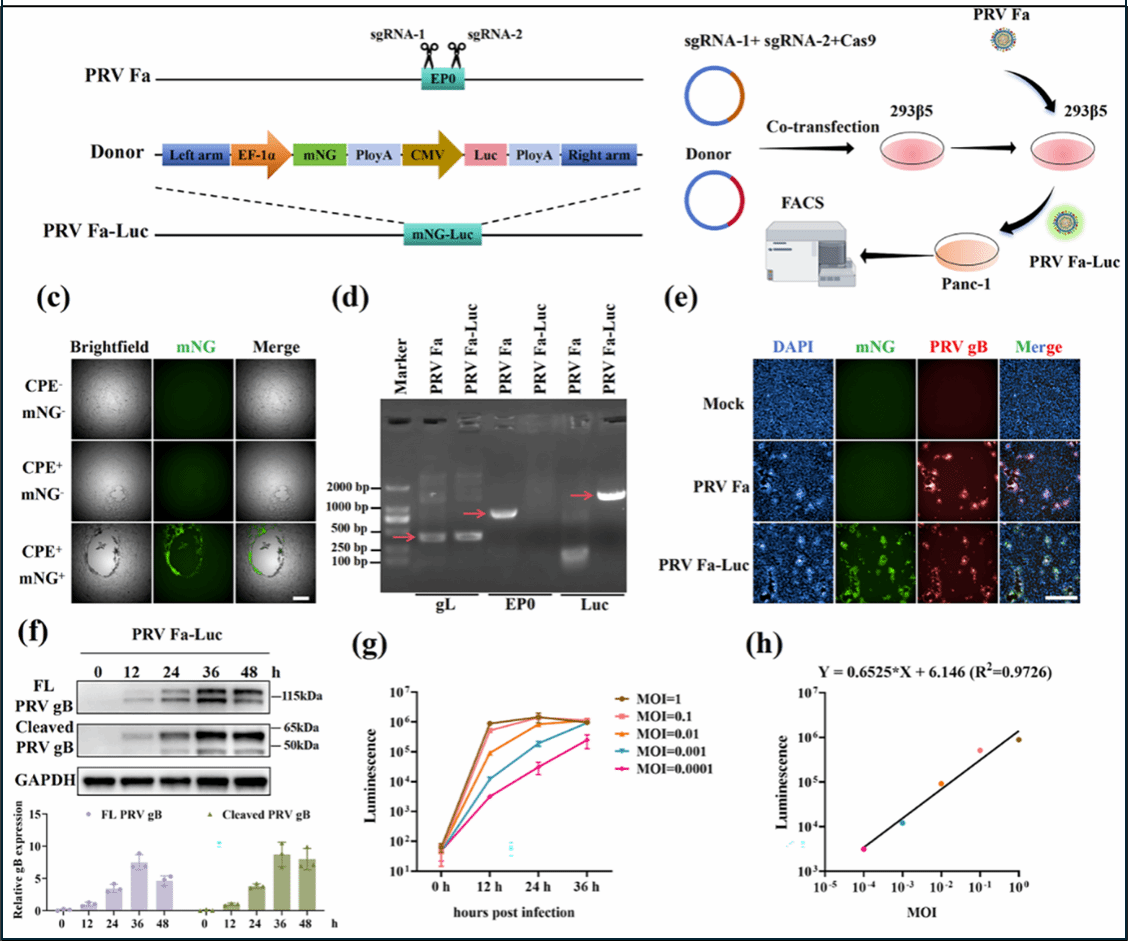Neurotropic viruses are highly invasive in the central nervous system (CNS) and can disrupt the microcirculation, leading to neurological complications and encephalopathy. Understanding these pathophysiological alterations is crucial for uncovering the underlying mechanisms of viral infection, developing effective vaccines, and creating targeted therapies. However, studying the cerebral microcirculation in vivo during infection is challenging. This study engineered the pseudorabies virus (PRV) Fa-Luc using the EP0-sgRNA-hSPCas9 system to investigate cerebral microcirculation dynamics during PRV-induced CNS infection. Moreover, a multi-modality imaging strategy that integrates macroscale magnetic resonance imaging, bioluminescence with microscale laser speckles, optical coherence tomography angiography, and two-photon imaging for multiscale analysis is developed. The results revealed an initial hyperemic response in the dorsal cortical blood flow, which later declined, especially in the primary visual cortex, along with notable vascular structural alterations, including abnormal dilation, in the later stages of infection. Furthermore, transcriptome sequencing suggested that PRV infection triggers immune activation and the release of inflammatory factors, leading to endothelial dysfunction and the inhibition of vascular development. This study offers novel insights into the pathogenesis of neurotropic viruses and provides a valuable tool for research on CNS infections and vaccine development.

Link:https://advanced.onlinelibrary.wiley.com/doi/10.1002/advs.202508124